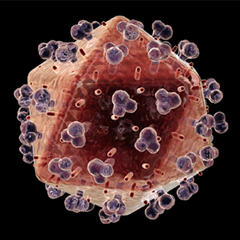Globally
Internationally, high-risk HIV/AIDS sub-populations include injecting drug users, plasma blood donors, men who have sex with men (MSM), adolescents and commercial sex workers. Developing nations are experiencing high levels of HIV incidence rates; moreover, high rates of HIV are found in rural areas (in which traditional, conservative views are upheld), migratory regions (in which prostitution is common), and such populations are typically poor, lacking the resources to necessary ensure appropriate knowledge and education of fundamental HIV preventive measures.
While sexual transmission and drug use are ubiquitously linked with the acquisition of HIV-infection in international settings, the HIV/AIDS epidemic is also influenced by a complex set of sociocultural causes as well as biological susceptibilities which include poverty, stigma, discrimination, healthcare accessibility (i.e., HIV prevention services, adequate HIV treatment regimens, etc.) along with possible genetic factors (i.e., delta 32 mutation).
Within the United States
More than 25 years into the AIDS epidemic, HIV infection continues to exact a tremendous toll in the United States (CDC, 2010). The Centers for Disease Control and Prevention (CDC) estimates that approximately 1.1 million persons are living with HIV in the United States. In 2007, HIV/AIDS Surveillance Reports discovered that 49% of U.S. citizens diagnosed with AIDS were Black/African American (CDC, 2009). Black women are hugely, and disproportionately, affected by AIDS, with the most likely transmission route being heterosexual sex (CDC, 2009). The largest population living with HIV (45%) comprised men who have sex with men (MSM), followed by persons infected through high-risk heterosexual contact (27%), those infected through injection drug use (22%), and those who were exposed through both male-to-male sexual contact and injection drug use (5%) (CDC, 2003).
Since the first cases of acquired immunodeficiency syndrome (AIDS) were reported in 1981, infection with human immunodeficiency virus (HIV) has grown to pandemic proportions, resulting in an estimated 65 million infections and 25 million deaths (CDC, 2006). During 2005 alone, an estimated 2.8 million persons died from AIDS, 4.1 million were newly infected with HIV, and 38.6 million were living with HIV (CDC, 2005).

